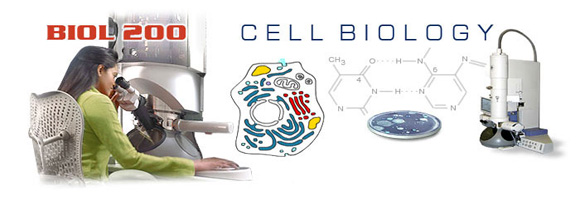
Course Outline
- 3 Group Case Study Reports
- 6 Group Thought Problem Assignments
- Midterm Exam
- Final Exam
Course Description
Student Profile
Jenny Jung, 2nd year Bachelor of Science student

“It gave me confidence that I could understand something that I never thought I was capable of. I want to get into the Bachelor of Science Psychology program and this course gave me a solid foundation to start my journey.”
Structure and function of plant and animal cells; cytoplasmic organelles and microscopy, biological information from gene to proteins, membranes, mitochondria and chloroplasts, the endomembrane system, secretion, intracellular digestion, endocytosis, transport processes, cytoskeleton and cell motility, cell cycle and mitosis. This is a 13 week course with regular due dates for group problems, case related material and the midterm exam.
The Intended Student
This course is open to students entering life science programs who have completed a full year of university level chemistry and a full year of university level biology with a lab. It is essential that students actively participate in on-line discussion forums and work with a group on problem and case assignments.
Course Content Overview
Biology 200 is designed to provide you with a functional grasp of the structure and function relations of the major systems in eukaryotic cells. It is designed for students who are entering programs in any of the life-science disciplines. While some background in chemistry is essential, this is not a biochemistry course; it provides the context and background for further study in cell and molecular biology, genetics and development. There is strong emphasis on problem solving and active learning.
The following is a brief description of the course content:
| Unit 1: | Cell Organelles & Microscopy – Introduction to cell organelles and their function, and the microscopy as a tool for their study. |
| Unit 2: | Informational macromolecules – You will study the features of the two major types of macromolecules that are essential for biological information flow, nucleic acids and proteins, and the forces that determine and stabilize their structure. |
| Unit 3: | Nuclei and Chromosomes – This module introduces the nucleus and its components and focuses on the relation between molecular and microscopic structure, the targeting of proteins to the nucleus and the construction of molecular and structural models for biological entities. |
| Unit 4: | Biological Information Flow – In this unit we do an overview of transcription, transcript and translation that is needed as background for later work in the course and which provides background for later work in genetics and molecular biology. |
| Unit 5: | Membranes – This unit introduces membrane components, phospholipid bilayers, membrane proteins and their interaction in real membranes, and well as the basics of membrane transport systems (both active and passive). |
| Unit 6: | Mitochondria and Chloroplasts – Mitochondria and chloroplasts as degenerate prokaryotic symbionts and their role in the chemiosmotic production of ATP. |
| Unit 7: | Endomembrane System – This large module deals with protein Processing in the endomembrane system; targeting of Proteins to the endoplasmic reticulum; co-translational insertion of proteins in membranes; Protein processing in the ER and Golgi; Vesicle Formation, Secretory & and Lysosomal Pathways, Endocytosis and intracellular digestion. |
| Unit 8: | Cytoskeleton – The major cytoskeletal components of cells; dynamic instability of microtubules and actin filaments; motor proteins, cell motility. |
| Unit 9: | Cell Cycle and Mitosis – Checkpoint cell cycle control, Activation and control of cyclin dependent kinase activity, Chromosomal replication, Molecular Mechanics of Mitosis. |
Evaluation
| Case Studies | 20% |
| Discussions | 15% |
| Group Thought Problems | 5% |
| Midterm Exam | 20% |
| Final Exam | 40% |
| Total | 100% |
Required Textbooks
Essential Cell Biology, 3rd ed., Alberts et al., Garland Publishing Co.
The textbook will be available for purchase at the UBC Bookstore.
